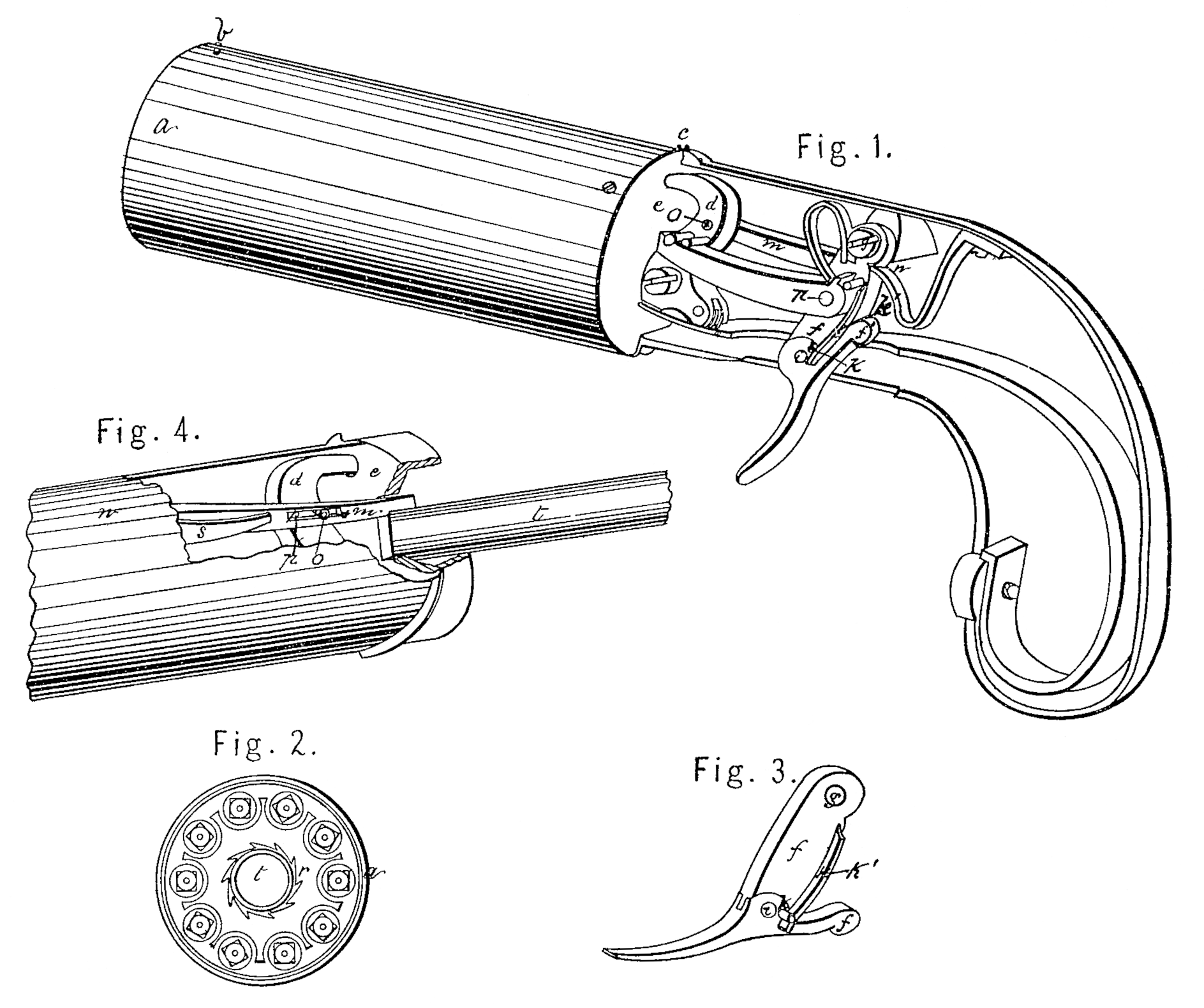US 6925
UNITED STATES PATENT OFFICE.
JACOB PECARE AND JOSIAH M. SMITH, OF NEW YORK, N.Y.
IMPROVED CONCEALED TRIGGER FOR FIRE-ARMS.
Specification forming part of Letters Patent, No. 6,925 dated December 4, 1849.
To all whom it may concern:
Be it known that we, Jacob Pecare and Josiah. M. Smith, of New York city, in the county of New York and State of New York, have invented a new and Improved Revolving Pistol; and We do hereby declare the following to be a full, clear, and exact description of the Same reference being had to the annexed drawings, making a part of this specification, in which similar letters refer to similar parts throughout.
‘The mature of our invention consists in so constructing a revolving or repeating pistol that an accurate aim may be taken; that an assailed party cannot by grasping the barrels prevent the assailant from repeating his fire; that the concealment of the trigger, hitherto unattained in revolvers, but particularly desirable in this kind of pistol, is effected; and that the barrels are made to revolve by simple mechanical means, thus combining in an unusual degree efficiency of action, security from accidental discharge, portability, and cheapness of construction.
The barrels, of which we prefer to make ten, are of the construction usual in such pistols, but have a sheath, a, or tube of metal surrounding them throughout their entire length. This is secured firmly by screws or otherwise to the stock in such manner that the barrels may revolve freely within the sheath. A bead, b, is placed on the farther end of this, and a sight, c, on the stock.
The hammer d is placed vertically within the stock, and strikes through the plate e upon the nipple of the upper barrel. It is drawn back in the act of revolving the barrels and of firing by a trigger, f, which is a lever of the second class, having its fulcrum at g, and a connecting-rod attached at h. The trigger has a joint at the point where it extends beyond the stock, that the lower or external part may be folded so as to lie in a line parallel to the axis of the barrels when not in use. At this point a common device, consisting of a pin, k, with spring k’ pressing against it, retains the external end of the trigger either in an extended or folded position. An arm, f’, on the external portion of the trigger, will, when pressed, open out this part and complete the trigger for use.
The barrels are made to revolve by the action of a lever of the third class, m, having the fulcrum at n. A pin, o, projecting from the side of the hammer, imparts the required motion to this lever by depressing it, while the hammer is being draw back by the trigger. This pin works through a slot, p, in the lever m, and that raises it again when the hammer strikes. The end of the lever m engages the ratch r on the barrels around on the shaft t and within the sheath a. When the hammer is returning and the lever is being raised the end passes up outside the ratch and drops into the ratch above that it has just left. The end of the lever m s kept pressing sidewise against the ratch by the spring s.
From the upper end of the trigger an arm extends through the plate into holes in the barrels for the purpose of preventing the barrels from revolving too far at each fire, which might occur by reason of the momentum when firing rapidly.
This device is similar to that already in use for the Same purpose, and is not shown in the drawings, as it would render them obscure.
What we claim as of our own invention, and desire to Secure by Letters Patent, is—
The construction of a concealed trigger capable of being disclosed and made ready to operate by simple pressure imparted by the hand to its rear end, as described herein.
JACOB PECARE,
JOSIA M. SMITH.
Witnesses:
S. H. Maynard,
Edwin. B. Underhill.

